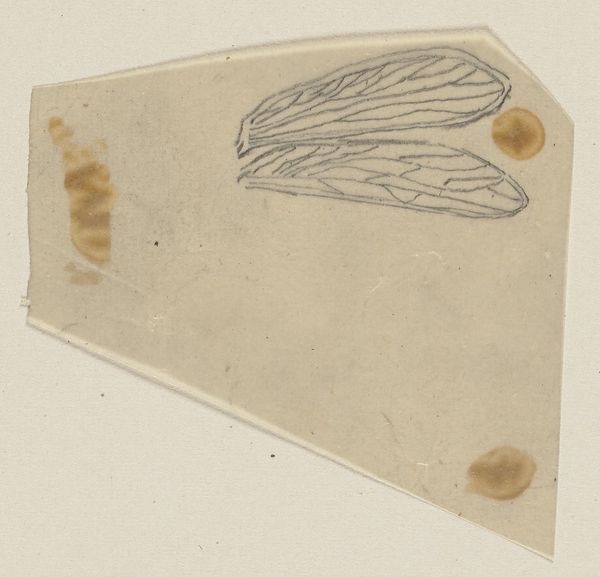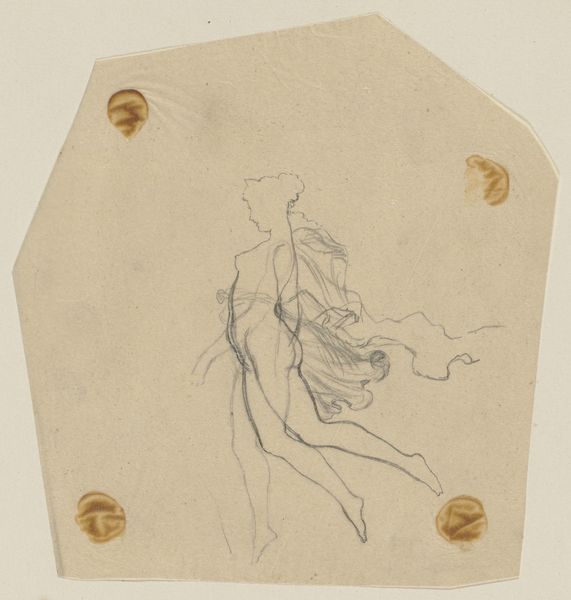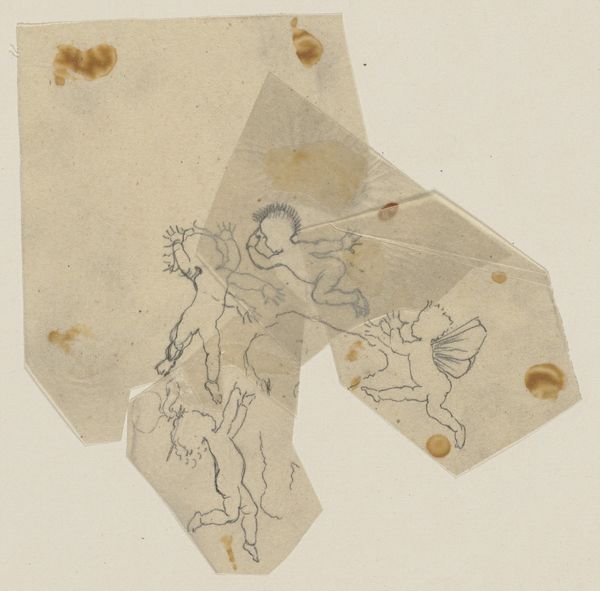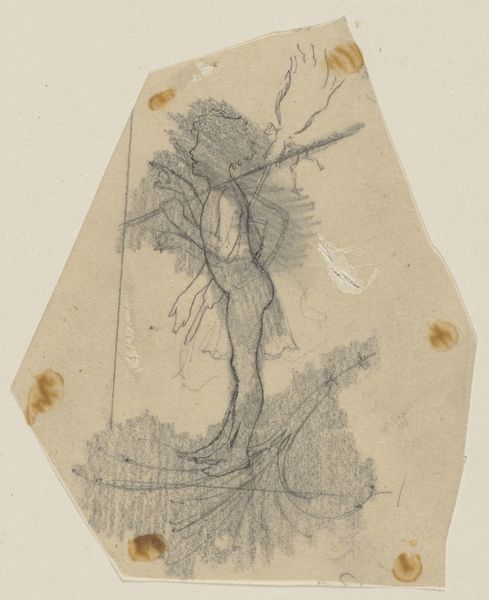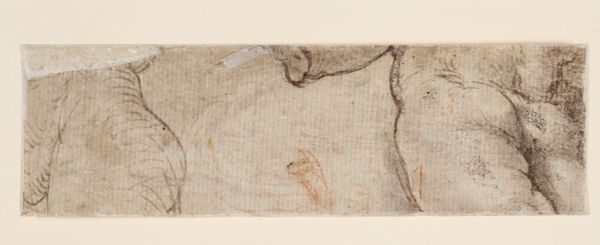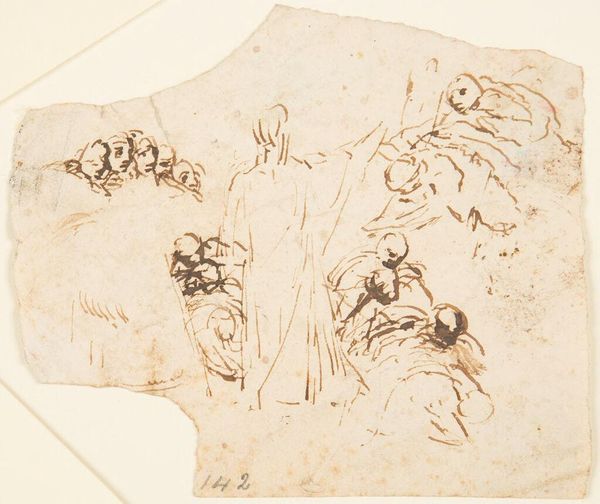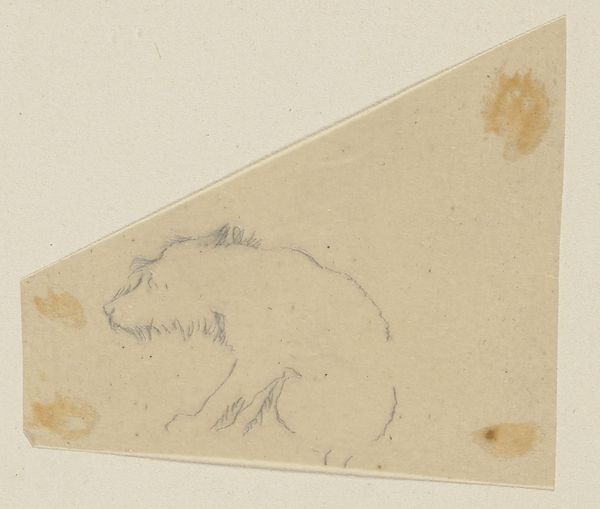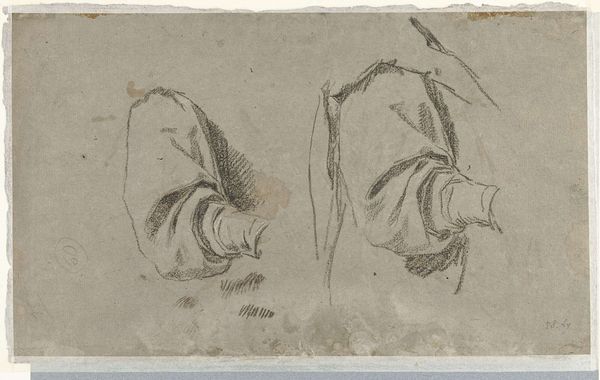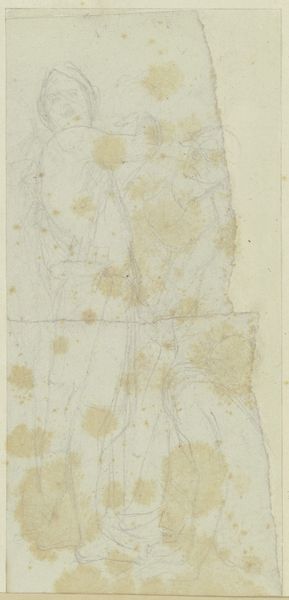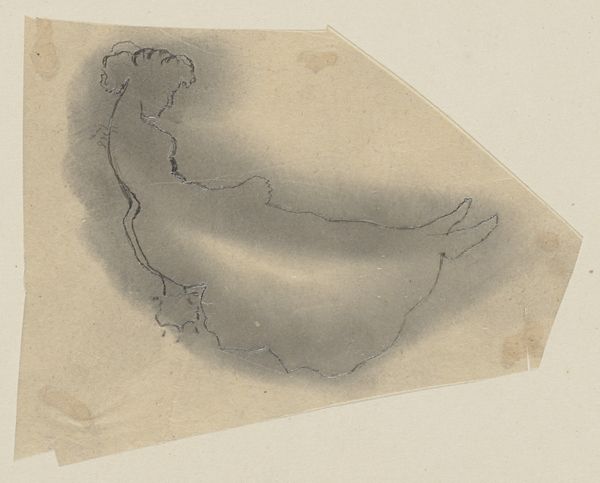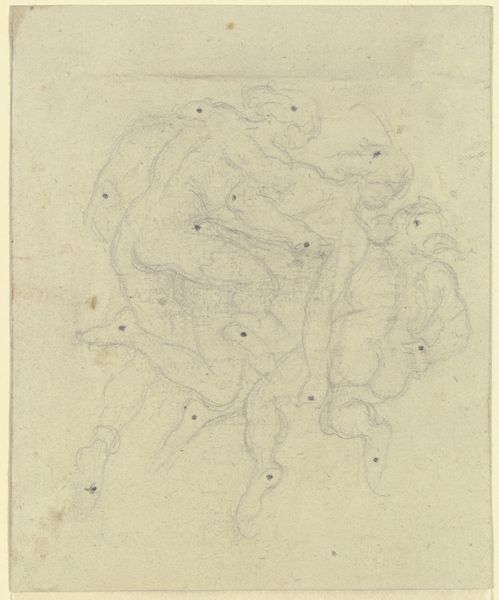
Copyright: Public Domain
Curator: Today, we are observing "Oberon spielt die Flöte für Phillida," a pencil drawing on paper by Paul Konewka, created around 1867 or 1868. Editor: My immediate impression is of fragile grace. The tentative lines, almost hesitant, create a dreamlike quality. There’s a delicate tension in the composition, as if it might dissipate at any moment. Curator: Konewka’s work frequently referenced mythology and folklore. Oberon, the king of the fairies, playing the flute for Phillida…it evokes themes of seduction, enchantment, the power of music to influence. Phillida, usually a shepherdess in pastoral poetry, is a figure often associated with idealized rural life and feminine virtue. Editor: The figures are remarkably minimal. Konewka’s economy of line isolates the essential gestures, but it leaves so much open to interpretation. The sinuous, decorative lines of the flora seem to envelop and define the space inhabited by these characters. Is this meant to emphasize Oberon's enchantment of Phillida within an environment responding to his presence? Curator: The thistle motif might symbolize earthly suffering or nobility – even a kind of divine blessing filtered through nature, but here in Romanticism it could speak more clearly about emotions, as well as about class conflicts: Phillida, as shepherdess is working-class, is “conquered” or tamed, by Oberon´s musical instrument. Also, musical instruments might represent higher-class leisure and entertainment. The artwork evokes romantic love, longing and loss. The question rises as: should working class or the poorer sections of society look for love from above. Editor: I agree. There’s something unsettling about the contrast between the seemingly effortless rendering of the figures and the clearly deliberate, perhaps overworked quality of the thistles below them. Also the edges and corners that give the image a sense of fragility - but I feel it invites a re-think in what romanticized visions represent in that epoch. Curator: It's intriguing how he balances detail with suggestion. While the figures themselves lack definitive contours, that lack gives space to interpretation, to our imagination and memories. It really showcases Konewka's talent in conveying story with simple tools, pencil, and paper, reflecting that search to understand human condition, society´s relations. Editor: Yes, there is more here to it than meets the eye in this understated aesthetic. I hadn’t expected to find such quiet provocation in a pencil sketch.
Comments
No comments
Be the first to comment and join the conversation on the ultimate creative platform.
